艺术性仓库17C 西班牙建筑欣赏
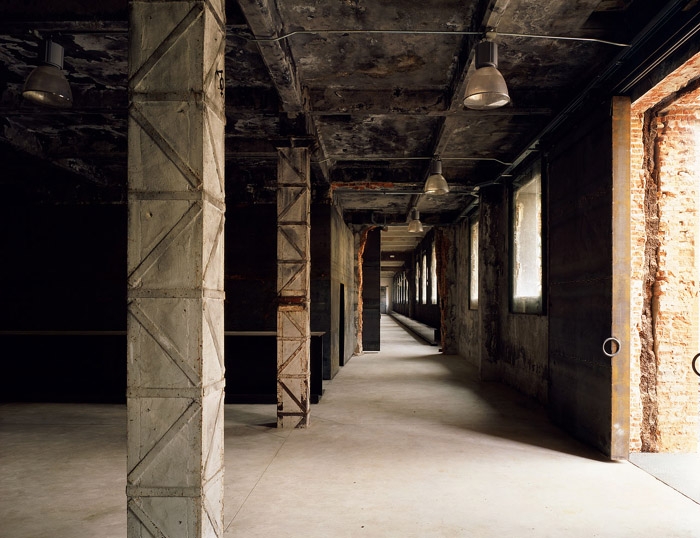
这是一个马德里旧屠宰场改建项目其中一部分,属于政府推广的文化项目。
最初建于1907年,目前打算建成一个全新的前卫文化中心,其中的20多个仓库都将得到改建。
最初建于1907年,目前打算建成一个全新的前卫文化中心,其中的20多个仓库都将得到改建。
其中一个仓库改建项目Warehouse 8B在6月7日已经报道,点击HERE进行查看。
本案17C是一个既考虑项目艺术性同时又考虑仓库未来租户的方案,在改建过程中,以激进但是又内敛的态度,将干预减少至最低。坦然,自信,在介入与不介入之间掌握了平衡。让新旧互为共生而不是简单的组合在一起,双方因为对方的存在而使得价值得到了提升。墙上的斑驳,外露的排水管都得到了保留。以其达到以新兴展望过去,反之亦然。
本案17C是一个既考虑项目艺术性同时又考虑仓库未来租户的方案,在改建过程中,以激进但是又内敛的态度,将干预减少至最低。坦然,自信,在介入与不介入之间掌握了平衡。让新旧互为共生而不是简单的组合在一起,双方因为对方的存在而使得价值得到了提升。墙上的斑驳,外露的排水管都得到了保留。以其达到以新兴展望过去,反之亦然。
地板,门窗,踏步,玻璃处理得简单直白,建立了新与旧的开诚沟通,并让双方的表现力得到最大化展示。
[page]
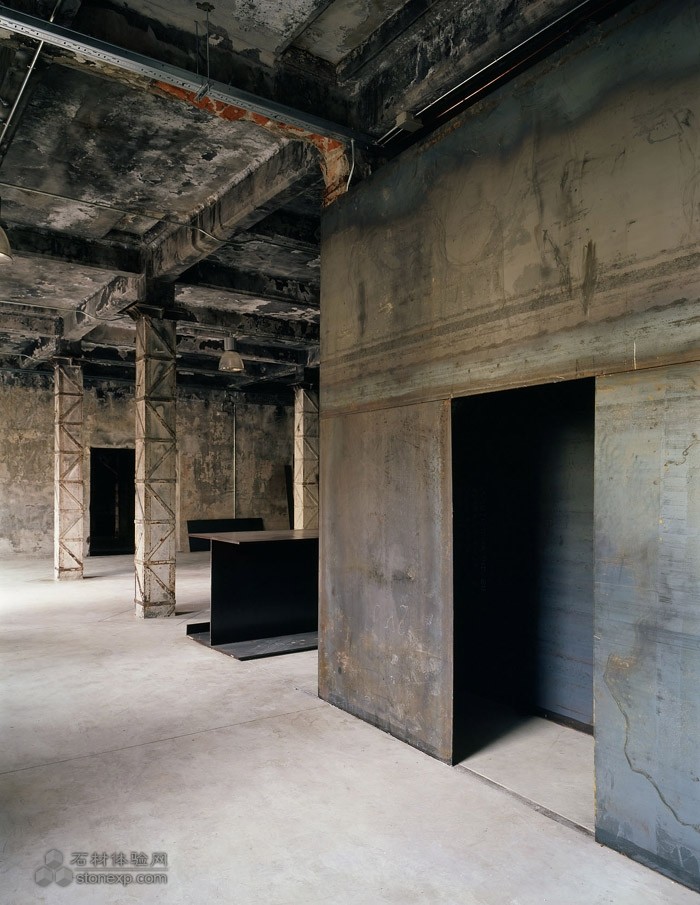
Location:
C/ PASEO DE LA CHOPERA, 14. NAVE 17 C. ANTIGUO MATADERO LEGAZPI. 28045 MADRID.

Location:
C/ PASEO DE LA CHOPERA, 14. NAVE 17 C. ANTIGUO MATADERO LEGAZPI. 28045 MADRID.
Preparation of the project and completion of construction schedule:
January 2006_December 2006.
January 2006_December 2006.
Project’s authorship:
Arturo Franco. (architect)
Fabrice van Teslaar. (architect)
Arturo Franco. (architect)
Fabrice van Teslaar. (architect)
Project’s collaborator
Diego Castellanos. (interior architect)
Diego Castellanos. (interior architect)
Site Supervisor and Quantity Surveyor:
Jose H. Largo Díaz.
Javier Muñoz.
Jose H. Largo Díaz.
Javier Muñoz.
Period for completion:
Five months
Five months
Work budget:
700,000 €.
700,000 €.
Furnishing budget:
Not contracted except locksmith’s work designed by the office and included in global budget.
Not contracted except locksmith’s work designed by the office and included in global budget.
Intervention area:
6.000 m2
6.000 m2
Developer/Owner
ARTS COUNCIL OF MADRID CITY COUNCIL
ARTS COUNCIL OF MADRID CITY COUNCIL
Construction Company:
Exisa.s.a.
Exisa.s.a.
Photographer/s:
Carlos Fernandez Piñar.Intermediae_Matadero
Carlos Fernandez Piñar.Intermediae_Matadero
[page]
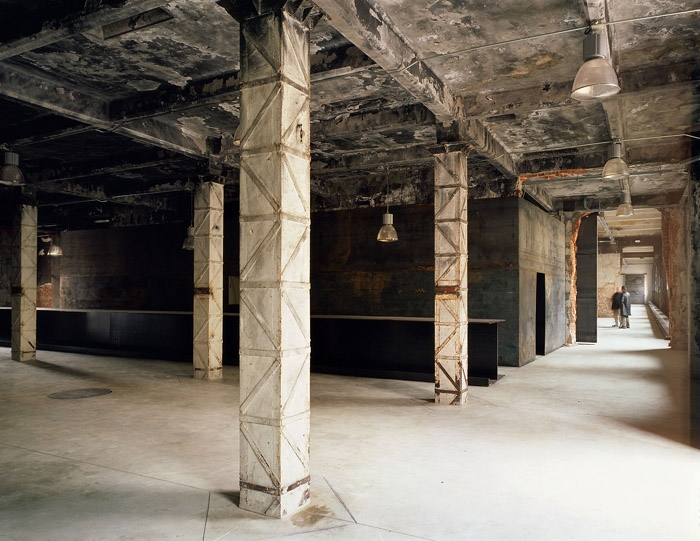
The project was born in the scope of the Old Slaughterhouse of Madrid and belongs to a cultural
program promoted by the City Council. A complex of more than twenty warehouses constructed
by the architect Luis Bellido circa 1907, that now intends to become a new avant-garde cultural
centre where different institutions have assumed the management and refurbishment of some
warehouses. ARCO Foundation, Ruipérez Foundation, the Teatro Español, the Designers
Society, COAM Foundation and Madrid City Council will be the first ones occupying this space.
First of all, the warehouse 17c has been assigned to Intermediae, a new institution created by the
Madrid City Council to promote contemporary creation through a program of scholarships and
initiatives linking artistic production and citizen participation. All of this is intended as a steady
process of production, where precisely the process will become the common thread of this space.
The warehouse 17c has been the first intervention made in the Matadero complex and, as such,
could be considered as a pilot trial. The project was born with two well-defined clients. On the one
hand, the Council itself by means of its Arts City Council and on the other hand, by means of
Intermediae and its programmatic constraints as the warehouse’s future tenant.
When addressing the project, Intermediae philosophy was the first condition and, as Pedro Aullón
says, the concept of process is still alive.
program promoted by the City Council. A complex of more than twenty warehouses constructed
by the architect Luis Bellido circa 1907, that now intends to become a new avant-garde cultural
centre where different institutions have assumed the management and refurbishment of some
warehouses. ARCO Foundation, Ruipérez Foundation, the Teatro Español, the Designers
Society, COAM Foundation and Madrid City Council will be the first ones occupying this space.
First of all, the warehouse 17c has been assigned to Intermediae, a new institution created by the
Madrid City Council to promote contemporary creation through a program of scholarships and
initiatives linking artistic production and citizen participation. All of this is intended as a steady
process of production, where precisely the process will become the common thread of this space.
The warehouse 17c has been the first intervention made in the Matadero complex and, as such,
could be considered as a pilot trial. The project was born with two well-defined clients. On the one
hand, the Council itself by means of its Arts City Council and on the other hand, by means of
Intermediae and its programmatic constraints as the warehouse’s future tenant.
When addressing the project, Intermediae philosophy was the first condition and, as Pedro Aullón
says, the concept of process is still alive.
[page]
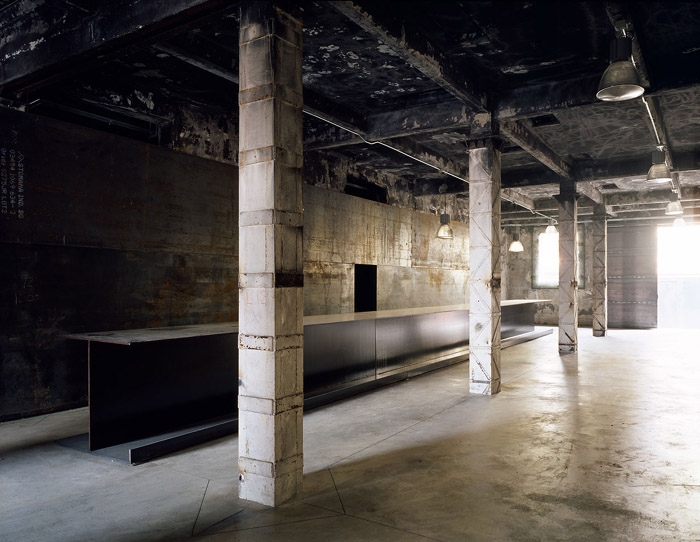
“The process...
Process is an idea related to relationship and change dynamics and implies, in our perspective, a
vivacious sense of experience. Being considered like this, the process doesn’t opt for the
analysis or synthesis preponderance but naturally coexists among them, installed on a base that
is intuition, foremost, and the open sky of an imagination that cannot be separated from
understanding. The process as a needful becoming, not in a theoretical or practical sense but
as reality that goes beyond this distinction, is inseparable from an idea of reflection on becoming
as well as on the idea of becoming itself, because it is possible to consider that all becoming is
mixed up in the same march of events. It’s the procession of processions, the absoluteness. If
certain thought in the first half of the Twentieth Century insisted on a process of physical as well
as metaphysical argument by a path able to transcend the philosophical tradition of substance, at
the same time it’s true that it is possible to find a non-contradictory tradition with substance that,
by means of a non-restrictive exegesis, highlights the requirement of motion and novelty, action
and processualism, functional capacity and duration. This is not alien to an assessment criterium
but it enriches it. It is continuity, discontinuity and the process continuity, alive reality.
Pedro Aullón”
Process is an idea related to relationship and change dynamics and implies, in our perspective, a
vivacious sense of experience. Being considered like this, the process doesn’t opt for the
analysis or synthesis preponderance but naturally coexists among them, installed on a base that
is intuition, foremost, and the open sky of an imagination that cannot be separated from
understanding. The process as a needful becoming, not in a theoretical or practical sense but
as reality that goes beyond this distinction, is inseparable from an idea of reflection on becoming
as well as on the idea of becoming itself, because it is possible to consider that all becoming is
mixed up in the same march of events. It’s the procession of processions, the absoluteness. If
certain thought in the first half of the Twentieth Century insisted on a process of physical as well
as metaphysical argument by a path able to transcend the philosophical tradition of substance, at
the same time it’s true that it is possible to find a non-contradictory tradition with substance that,
by means of a non-restrictive exegesis, highlights the requirement of motion and novelty, action
and processualism, functional capacity and duration. This is not alien to an assessment criterium
but it enriches it. It is continuity, discontinuity and the process continuity, alive reality.
Pedro Aullón”
[page]
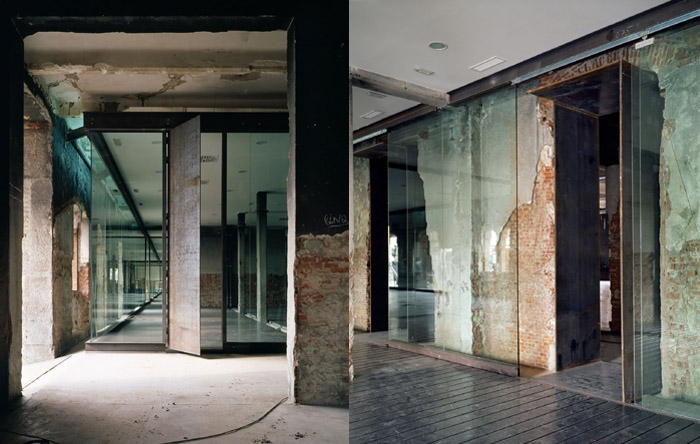
From the very beginning, we assumed the intervention as an opportunity to explore the
possibilities of refurbishment. The point was to contribute with a new attitude in face of the public
realm of historical patrimony, a radical posture, an experience about limits, the limits of non–
intervention, reducing such intervention to a bare minimum.
In this project, the traditional insecurity and theoretical vagueness that persistently affects actual
interventions on patrimonial legacy with results halfway in-between what to do and what not to do,
disappeared from the very beginning. We decided to choose an idea and to explore it to the very
end, without fears, with no inferiority complexes. We decided to intervene in a radical manner
without intervening, taking the idea to the ultimate consequences.
This crude standpoint before refurbishment and the necessity to serve Intermediae like a rising
institution in constant evolution, so the natural ambiguities from a bicephalous client, had forged
the natural hardness of the project.
We made no concessions concerning refurbishment, respecting the ruin, boosting its values with
minimum intervention. A constant dialog has been established between the new and the old,
without mixing them up, together but not blended. These two languages look close to each other.
The new boosts the value of the old and vice versa. Two viewpoints face to face, both revealed
with maximum rawness. In a voluntary manner, we chose to preserve the cuts on the walls, the
same kind of cuts a radial saw does. Exposed, PVC drain pipes are more interesting. With the
withdrawal of revoke, marks made by the backhoe originate unexpected textures. Here, cork
isolations appear like a witness of its cooling history, with no inferiority complexes. Thus, the past
reveals itself, the work reveals itself. Any witness of the process remains intact. The powder blue
of levels, the retrieval and consolidation of columns, signs, wrinkles, wounds still open, like the
existence of an old man with no oddities, where its immoderate personality seems to be beyond
anything.
Against this, what is new: very few, very hard, very clean and very upright. The novelty appears
with determination, sometimes very heavy, very confident; sometimes very clear, very fragile.
Youthfulness looking to the past and vice versa.
Its condition of transformable space led us to consider its reutilisation, its relocation, its constant
manipulation and in its high wear resistance. For this, we have used materials coming directly
from industrialization, with no transformation at all, using standard dimensions. Thus, de-
contextualised steel profiles, with no treatment, become benches, bars, raised floors,
baseboards, doors, glass stops, etc. Also, glass mounted the easiest way with its maximum
dimensions and uncut can be reutilised. A world of industrial materials loaded with heaviness,
able to establish an open communication with the old, the ancient, reaching the both its maximum
expressiveness.
possibilities of refurbishment. The point was to contribute with a new attitude in face of the public
realm of historical patrimony, a radical posture, an experience about limits, the limits of non–
intervention, reducing such intervention to a bare minimum.
In this project, the traditional insecurity and theoretical vagueness that persistently affects actual
interventions on patrimonial legacy with results halfway in-between what to do and what not to do,
disappeared from the very beginning. We decided to choose an idea and to explore it to the very
end, without fears, with no inferiority complexes. We decided to intervene in a radical manner
without intervening, taking the idea to the ultimate consequences.
This crude standpoint before refurbishment and the necessity to serve Intermediae like a rising
institution in constant evolution, so the natural ambiguities from a bicephalous client, had forged
the natural hardness of the project.
We made no concessions concerning refurbishment, respecting the ruin, boosting its values with
minimum intervention. A constant dialog has been established between the new and the old,
without mixing them up, together but not blended. These two languages look close to each other.
The new boosts the value of the old and vice versa. Two viewpoints face to face, both revealed
with maximum rawness. In a voluntary manner, we chose to preserve the cuts on the walls, the
same kind of cuts a radial saw does. Exposed, PVC drain pipes are more interesting. With the
withdrawal of revoke, marks made by the backhoe originate unexpected textures. Here, cork
isolations appear like a witness of its cooling history, with no inferiority complexes. Thus, the past
reveals itself, the work reveals itself. Any witness of the process remains intact. The powder blue
of levels, the retrieval and consolidation of columns, signs, wrinkles, wounds still open, like the
existence of an old man with no oddities, where its immoderate personality seems to be beyond
anything.
Against this, what is new: very few, very hard, very clean and very upright. The novelty appears
with determination, sometimes very heavy, very confident; sometimes very clear, very fragile.
Youthfulness looking to the past and vice versa.
Its condition of transformable space led us to consider its reutilisation, its relocation, its constant
manipulation and in its high wear resistance. For this, we have used materials coming directly
from industrialization, with no transformation at all, using standard dimensions. Thus, de-
contextualised steel profiles, with no treatment, become benches, bars, raised floors,
baseboards, doors, glass stops, etc. Also, glass mounted the easiest way with its maximum
dimensions and uncut can be reutilised. A world of industrial materials loaded with heaviness,
able to establish an open communication with the old, the ancient, reaching the both its maximum
expressiveness.
[page]
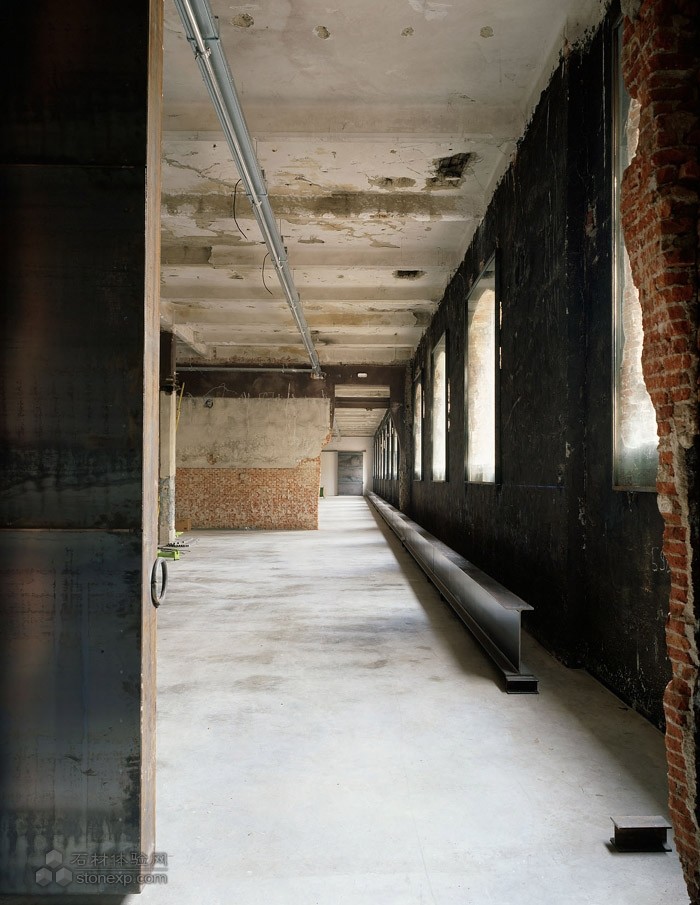
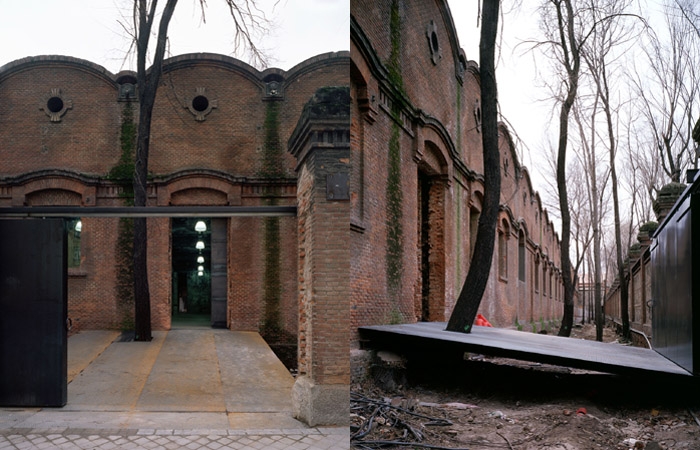
[page]
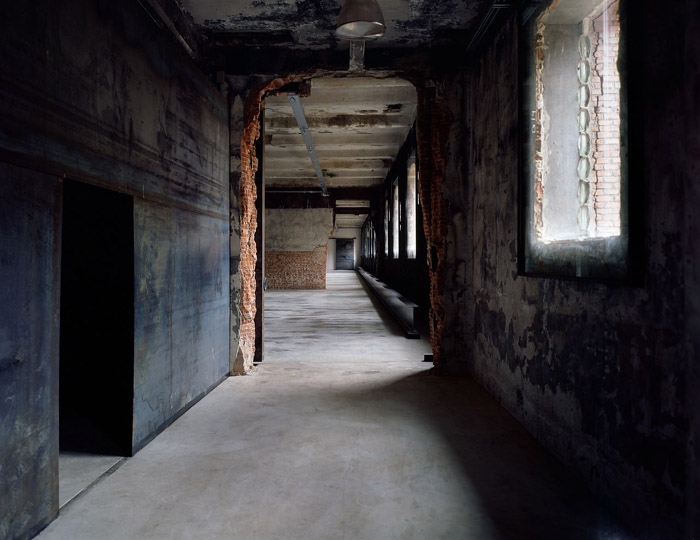
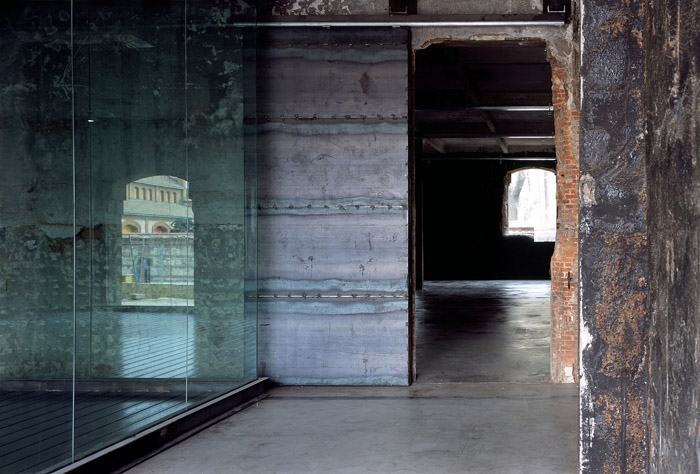
[page]
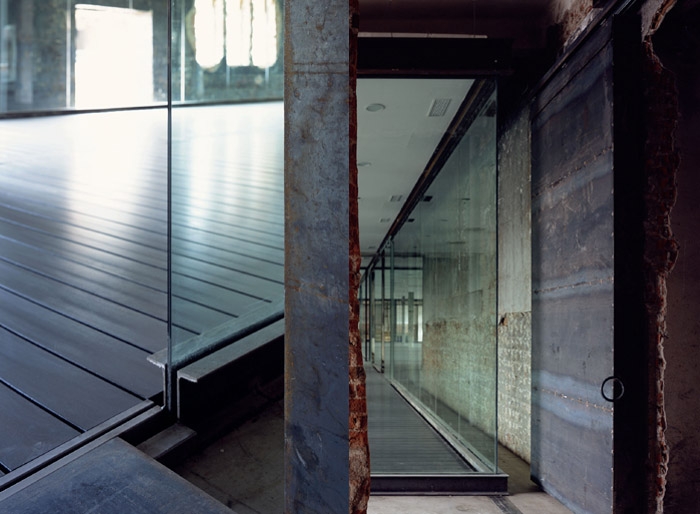
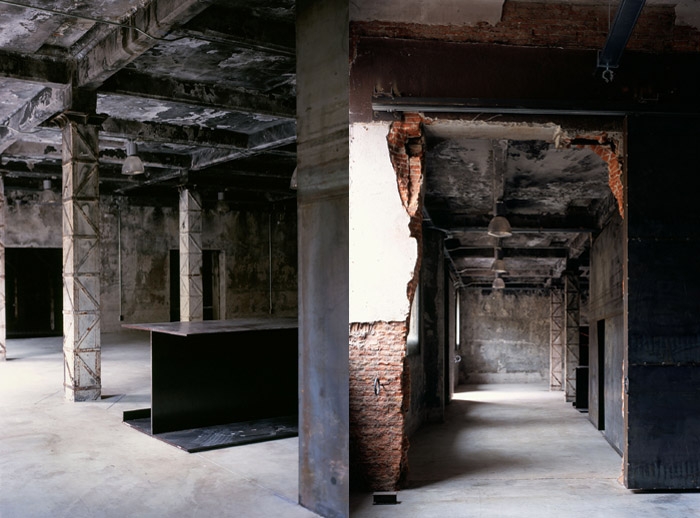
[page]
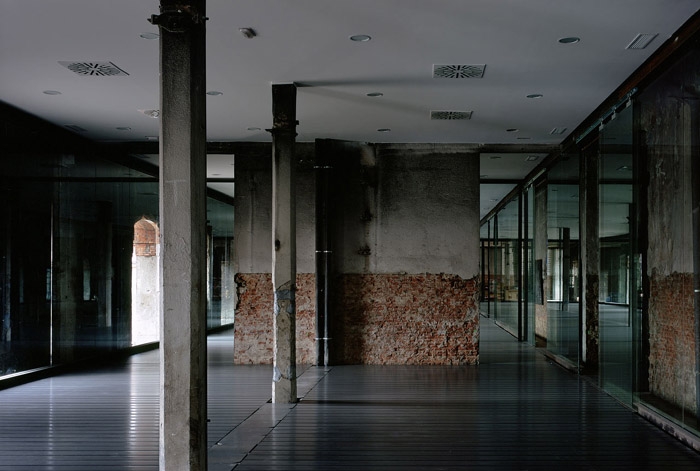
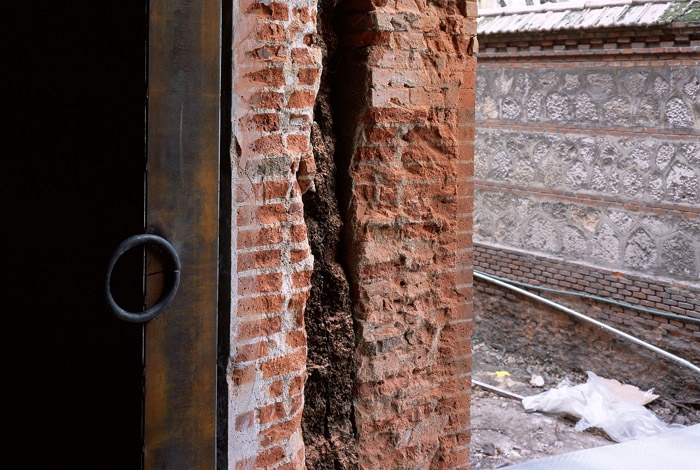
[page]
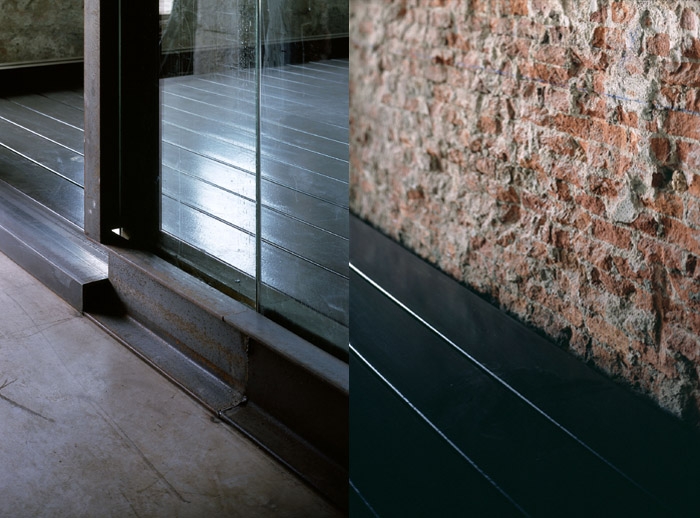
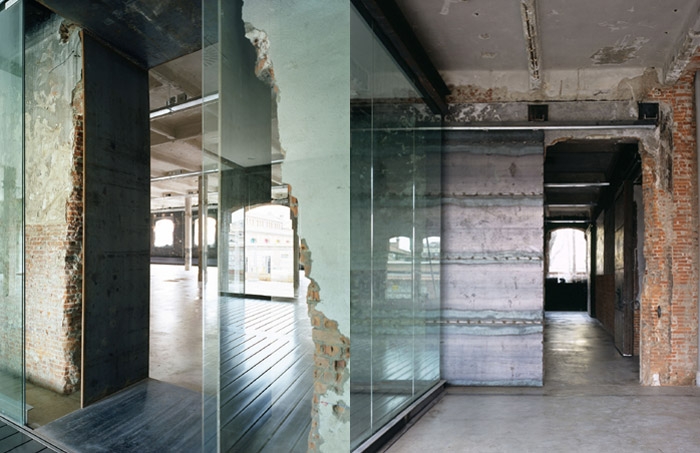
[page]
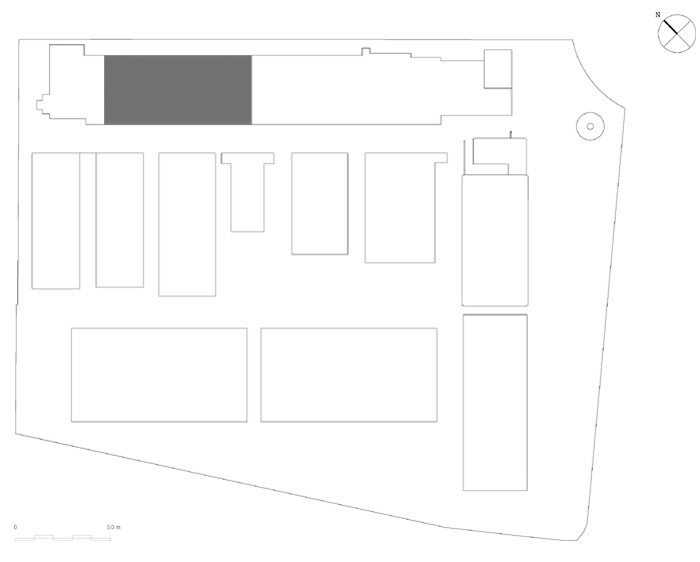
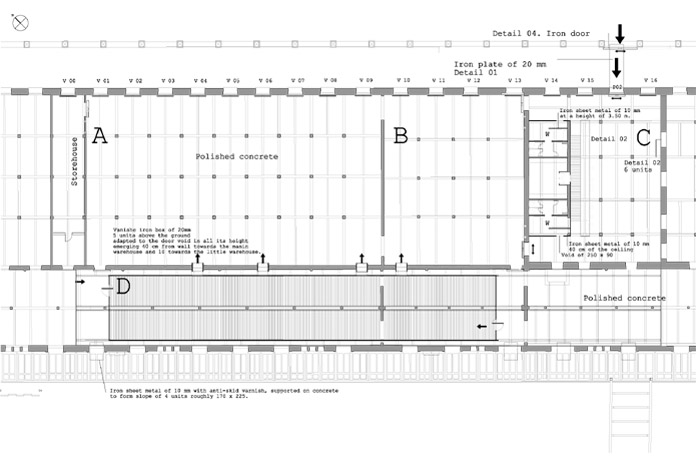

[page]

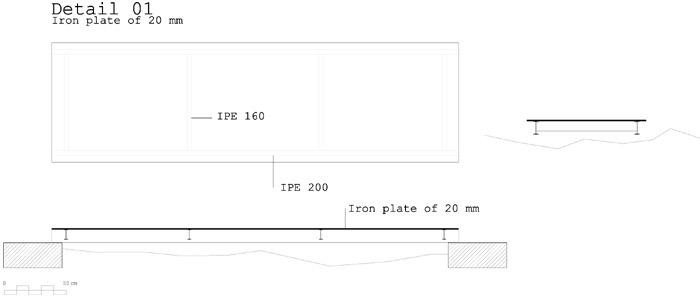

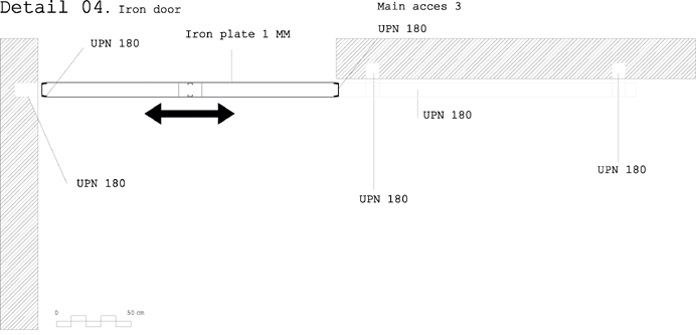
MORE:Arturo Franco
版权声明:
• 凡注明“石材体验网”的所有文字、图片、音视频、美术设计和程序等作品,版权均属石材体验网所有。未经本网授权,不得进行一切形式的下载、转载或建立镜像。
• 您若对该稿件内容有任何疑问或质疑,请即与体验网联系,本网将迅速给您回应并做处理。
点击右侧【在线咨询】或至电0769-85540808 处理时间:9:00—17:00
石材体验网部份作品均是用户自行上传分享并拥有版权或使用权,仅供网友学习交流,未经上传用户书面授权,请勿作他用。

